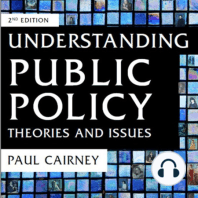14 min listen

Using policy theories to interpret public health case studies: the example of a minimum unit price for alcohol
Using policy theories to interpret public health case studies: the example of a minimum unit price for alcohol
ratings:
Length:
47 minutes
Released:
Apr 14, 2022
Format:
Podcast episode
Description
By James Nicholls and Paul Cairney, for the University of Stirling MPH and MPP programmes.
There are strong links between the study of public health and public policy. For example, public health scholars often draw on policy theories to help explain (often low amounts of) policy change to foster population health or reduce health inequalities. Studies include a general focus on public health strategies (such as HiAP) or specific policy instruments (such as a ban on smoking in public places). While public health scholars may seek to evaluate or influence policy, policy theories tend to focus on explaining processes and outcomes,.
To demonstrate these links, we present this podcast and blog post to (1) use an initial description of a key alcohol policy instrument (minimum unit pricing in Scotland) to (2) describe the application of policy concepts and theories and reflect on the empirical and practical implications.
Using policy theories to interpret public health case studies: the example of a minimum unit price for alcohol | Paul Cairney: Politics & Public Policy (wordpress.com)
There are strong links between the study of public health and public policy. For example, public health scholars often draw on policy theories to help explain (often low amounts of) policy change to foster population health or reduce health inequalities. Studies include a general focus on public health strategies (such as HiAP) or specific policy instruments (such as a ban on smoking in public places). While public health scholars may seek to evaluate or influence policy, policy theories tend to focus on explaining processes and outcomes,.
To demonstrate these links, we present this podcast and blog post to (1) use an initial description of a key alcohol policy instrument (minimum unit pricing in Scotland) to (2) describe the application of policy concepts and theories and reflect on the empirical and practical implications.
Using policy theories to interpret public health case studies: the example of a minimum unit price for alcohol | Paul Cairney: Politics & Public Policy (wordpress.com)
Released:
Apr 14, 2022
Format:
Podcast episode
Titles in the series (34)
Policy Concepts in 1000 Words: Policy change and measurement by Understanding Public Policy (in 1000 and 500 words)